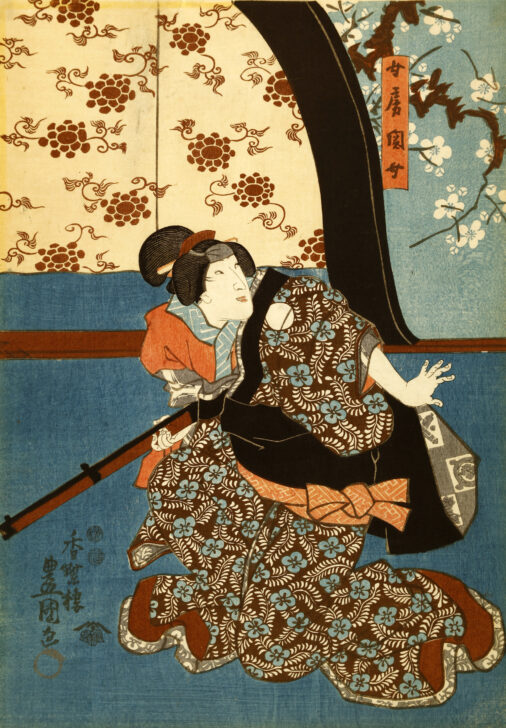Yoshitsune’s Letter from Koshigoe: Bandō Shūka I as Gotobei’s wife Sekijō
Utagawa Kunisada

Description
Subject Matter:
Yoshitsune’s Letter from Koshigoe is part of the Heike-Genji cycle of plays recounting the wars featuring the two prominent warrior families, the Taira (Heike) and the Minamoto (Genji). This play references Minamoto Yoshitsune’s petition to his brother, Yoritomo, victor of the recent war with the Heike. The play also parodies events at the foundation of the Tokugawa shogunate at the beginning of the 17th century. In this parody, Yoritomo represents Tokugawa Ieyasu, founder of the Tokugawa shogunate, and Yoshitsune represents Toyotomi Hideyori, the son of Toyotomi Hideyoshi.
The actor Bandō Shūka I also held the name Bandō Mitsugorō V. He was born in 1813 and active from 1824 until shortly before his death in 1854. He was known for both period and contemporary plays and for his portrayal of young onnagata, a word that means “female form” or “female role”. In this print, Shūka plays Sekijō, the wife of Gotobei, one of Yoshitsune’s loyal retainers.
Physical Description:
A woman crouches, looking over her left shoulder. She wears a long patterned robe in disarray. In her right hand she carries a long gun. The wall behind her is painted with a plum tree. A recessed screen has a dark floral pattern on a light background.
This is the center panel of a triptych.
Inscriptions: Tsutaya, Kichizō (Publisher's seal); Fuku/Muramatsu (Censor's seals); Signature: Toyokuni ga; Sekijō (undeciphered)
Usage Rights:
If you are interested in using an image for a publication, please visit https://umma.umich.edu/request-image/ for more information and to fill out the online Image Rights and Reproductions Request Form.